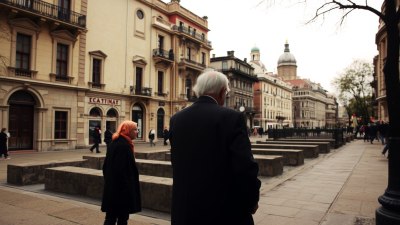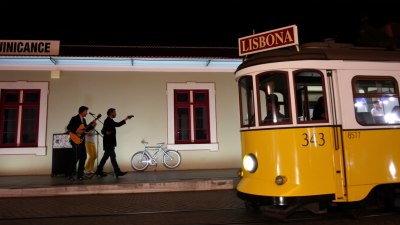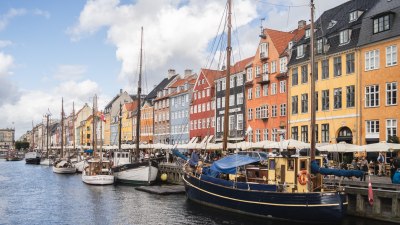The Labyrinth of Borges Begins in Buenos Aires
Explore the intricate nexus of Jorge Luis Borges' works set in Buenos Aires and their philosophical implications.

Image created with Flux Schnell
In the heart of Argentina lies one of the most culturally significant cities in Latin America—Buenos Aires. Renowned for its rich literary history, Buenos Aires is often immortalized in the works of its famed son, Jorge Luis Borges. This author, who weaves time, identity, and reality into his narratives, uses the city itself as an essential character in his stories. Thus, the labyrinth becomes not only a metaphor for the complexities of existence but also a pathway into the diverse layers of Borges' philosophical contemplations.
The Early Life of Borges
Jorge Francisco Isidoro Luis Borges was born on August 24, 1899, in Buenos Aires, into a family deeply entwined with literature and languages. His multifaceted upbringing exposed him to various cultures and literature, fostering his passion for writing from a young age. Borges was an avid reader, delving into philosophical texts, poetry, and works by European authors, all of which would later influence his unique narrative style. After a brief period in Europe, Borges returned to Buenos Aires, only to find himself a local literary icon.
Exploring the City: A Literary Landscape
Buenos Aires itself is a labyrinth, characterized by its winding streets, bustling cafes, and hidden corners. These elements of the city frequently appear in Borges' writings. Through the shared experiences of its residents, Borges captures the vibrant energy of urban life, blending it with his introspective and often enigmatic motifs. His works, whether they reference specific locations or embody the atmosphere of the city, showcase the profound relationship he had with Buenos Aires, depicting it as a city of ghosts and memories.
The Labyrinth as a Motif in Borges' Work
The labyrinth is a recurring motif in Borges' oeuvre, symbolizing the complexity of human existence, where reality becomes blurred. In stories like 'The Garden of Forking Paths' and 'The Library of Babel,' Borges uses labyrinthine structures to explore concepts of time, infinity, and identity. Each twist and turn in these intellectual mazes leads readers to ponder profound existential questions about choice and consequence.
Writing ‘The Garden of Forking Paths’
In this short story, Borges recounts the tale of a Chinese spy, Yu Tsun, who discovers a labyrinthine book that serves not only as a narrative but also as a conceptual framework for understanding the universe. The story reflects Borges' fascination with non-linear narratives and the idea that every decision creates a divergence of possibilities, much like navigating the streets of Buenos Aires. Just as Buenos Aires has historically been a city of crossroads, choices, and paths taken and not taken, Borges illustrates that our lives can be akin to a labyrinth, where every choice leads to various potential outcomes.
Philosophical Underpinnings of Borges’ Labyrinths
The labyrinths found in Borges' stories are more than mere structures; they offer a philosophical commentary on the nature of reality and human consciousness. They evoke the existential dilemmas faced by individuals, challenged by the limitations of perception and comprehension. Borges' use of labyrinths invites readers to reflect on their own paths through life, decisions, and the way they navigate the complexities of human relationships and existence.
Borges and the Concept of Infinite Libraries
In 'The Library of Babel,' Borges constructs an infinite library, a metaphorical labyrinth where all possible books exist, showcasing the vastness of knowledge and literature. The characters trapped within the library grapple with the futility of meaning in an infinite universe. Buenos Aires, too, serves as a symbolic library bursting with literary treasures, echoing Borges' endless search for knowledge and understanding. The library represents the myriad choices available to readers, much like navigating the diverse narratives and histories of Buenos Aires.
The Duality of Buenos Aires in Borges' Eyes
Borges often portrayed Buenos Aires as both a wondrous labyrinth of literary inspiration and a perplexing maze fraught with the anxieties of existence. This duality reflects his existentialist views, where the beauty of life is intermixed with despair and confusion. Through his vividly crafted environments, the labyrinthine nature of the city becomes a lens through which Borges not only examines his own life but also the universal truths of the human condition.
Influence of Buenos Aires on Borges’ Style
The urban landscape of Buenos Aires not only influenced the content of Borges' work but also carved out his distinct narrative style. His use of intricate prose and dense imagery often draws upon the vibrant life of the city, inviting readers into a world where real and fictional realms collide. The streets of Buenos Aires, filled with the sounds of tango music and the scent of empanadas, play as significant a role in his storytelling as the characters themselves.
Borges and the Thematic Elements of Memory
Memory features prominently in Borges’ writings, where the labyrinth becomes a vehicle through which individuals encounter their past. In stories like 'Funes the Memorious', Borges presents characters who possess an overwhelming recollection of their experiences, paralleling the experience of navigating memories in the labyrinth of the mind. The notion of memory, tied to the very streets and monuments of Buenos Aires, underscores Borges’ exploration of personal identity and the nature of self.
The Intersection of Fiction and Reality
Borges blurred the lines between fiction and reality, allowing Buenos Aires to be not just a backdrop but an active participant in his narratives. His reflections on the city lend themselves to a meta-literary approach, where the very act of storytelling becomes a space for personal exploration. For instance, in 'The Aleph', an object containing all points of the universe is hidden within a Buenos Aires cellar, suggesting that even within the confines of the labyrinth, infinite possibilities exist.
Borges’ Legacy in Buenos Aires
Today, Borges' legacy is deeply rooted in Buenos Aires, where literary tours celebrate his work. The city continues to inspire writers, poets, and thinkers, perpetuating the labyrinthine exploration ingrained in Borges' stories. Bookstores, libraries, and cafes serve as living tributes, allowing new generations to delve into the complexities and enigmas that Borges so masterfully crafted.
Embracing the Labyrinthine Nature of Life
As we navigate our own labyrinths, the intricate weaving of Borges' narratives reminds us that life is an expansive maze of decisions, feelings, and connections. Buenos Aires stands as a testament to the interplay between literature and reality, a city that continues to inspire and perplex. In embracing the labyrinth, we find meaning in the chaos, allowing us to confront the profound questions that shape our understanding of existence.
The Labyrinth of Borges and Beyond
Ultimately, the labyrinth of Borges begins in Buenos Aires but stretches infinitely into the realms of literature, philosophy, and the human experience. Borges invites readers into this timeless maze, challenging them to seek their own truths while traversing the streets of both the city and the mind. With each turn, each moment of contemplation, the labyrinth reveals new dimensions, illuminating the beauty and complexity of life that mirrors the city's own intricate pathways. In embracing the labyrinth of Borges, we are encouraged not only to observe but to engage actively with the narratives that shape our own lives.











